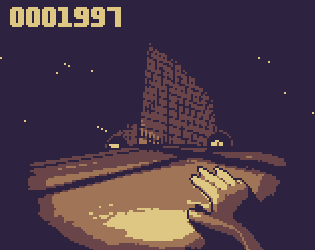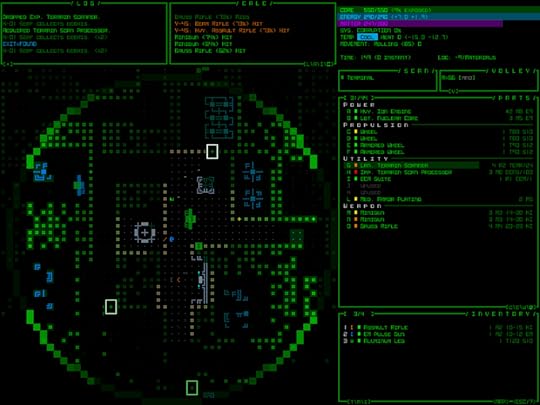Kill Screen Magazine's Blog, page 41
October 17, 2016
Code Romantic, a visual novel about love and programming
If you like the sound of a visual novel with both computer science puzzle and romance elements then Code Romantic is for you. So far, creator Pretty Smart Games has released two of the game’s chapters, with more to come a little further down the line.
Unlike Zachtronics-style programming games—where players learn fictional systems—Code Romantic is teaching players using C#, a coding language folks use a whole bunch. A game like Zachtronics’s Shenzhen I/O teaches more logic-based theories, while Code Romantic is starting more traditionally with the basics of code semantics. No prior programming experience is necessary, as the game starts off with very simple commands—stuff you’d learn in an intro to programming course. Likely, later puzzles will increase in difficulty.
a shout-out to Ada Lovelace

Code Romantic’s programming aspects are integrated into the narrative; the code portions are driven along by the story of a dystopian society where technology has become evil. Mina Lovelace (a shout-out to Ada Lovelace, the first programmer), the game’s protagonist, is a coding prodigy. Code Romantic centers heavily on Mina’s relationship with her mom—who is also a technology genius—and how they’re fighting back against the enemy. Romance, of course, plays a big part in the story, too: “I mean, it’s in the title!” creative director Miko Charbonneau said.
More than anything, though, Code Romantic is about bravery, and about forgoing perfection for just trying. “Sometimes you have to be braver than others, because people have misjudged you, or made it harder for someone that looks like you,” Charbonneau said on Tumblr. “But no one can take your bravery away.”
Play the first two chapters of Code Romantic on itch.io, then sign up for the game’s mailing list for updates as they come. Development is detailed on the Code Romantic blog.

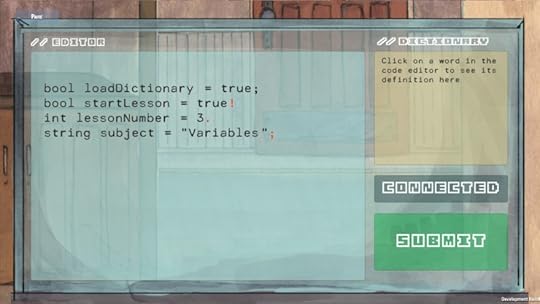

The post Code Romantic, a visual novel about love and programming appeared first on Kill Screen.
New frantic game is basically Devil Daggers in space
There are particular games that can only exist within the confines of the technological limitations of the time they were created. Missile Command (1980) feels anxious in its simplicity: the silence of surrounding the explosions of the missiles reminds you that, eventually, no matter how hard you try, all the cities you are attempting to save will be destroyed. On the other hand, the 2007 Xbox 360 remake of Missile Command added techno music and other small tweaks that, together, deeply obscure the Cold War-era fear of the original.
the anxiety heightened by its use of Game Boy graphics
An entry into the fifth GBJam, You’re In Space And Everyone Wants You Dead, creates a similar atmosphere to the original Missile Command, the anxiety heightened by its use of Game Boy graphics. It’s a 3D platform-runner in which you frantically avoid horrifying eyeball monsters and jump between small planets, making the most of their gravitational pull. You can also try to throw blocks at the eyeball monsters to rack up more points, but this is secondary to desperately trying to get away from them. The sound is minimal, the colors are minimal, and the squares of terrain you run over blend together as the monsters loom ever closer.
You’re In Space and Everyone Wants You Dead feels like a game that exists best with the constraints placed on it by GBJam. The designers were required to keep the original Game Boy screen resolution, and have no more than four colors. The result is an austere landscape, where you can easily get lost in the process of trying to flee the creatures giving chase—achieving a similarly chaotic horror as Devil Daggers. The terrain that flows beneath you, around you and, at times, away from you, creates an almost claustrophobic feeling, despite the fact that you’re running through space. This makes the monsters approach seem even closer.
The game certainly doesn’t seem to be made as a horror game, but it serves as a reminder that simplicity often creates tension and a memorable atmosphere. Sure, a disgusting disfigured monstrosity chasing you is scary, but the knowledge that no matter how hard you run, eventually you will fall, is intense in a different way. You’re In Space and Everyone Wants You Dead is a runner that, with it’s simple planes and baddies, makes sure you want to run.
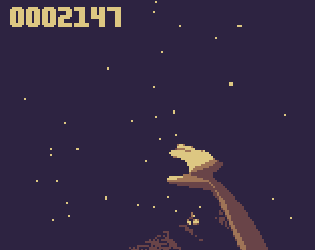
You can download You’re In Space and Everyone Wants You Dead here.
The post New frantic game is basically Devil Daggers in space appeared first on Kill Screen.
Roguelikes aren’t done with ASCII art yet
ASCII and the roguelike genre are practically inseparable. ASCII was there at the birth of the genre, bringing Rogue (1980) itself to life—and it’s stayed, with today’s most ambitious roguelikes such as Dwarf Fortress (2006), Ultima Ratio Regum (2012), and Cataclysm: Dark Days Ahead (2013) crafting sprawling worlds and adventures from ASCII’s collection of characters.
It’s understandable why ASCII persists even as the roguelike expands into myriad subgenres and aesthetics. The simple abstractions of your @ hero, potions, enemies, items, and so on, as letters and symbols allows for vast potential without having to visually display such complexities. Instead, flavor text, underlying gameplay systems, and the player’s imagination do the hard work.
A dynamic world of robots and encrypted files
Cogmind is another roguelike to add to that growing list. Eschewing the more common fantasy and apocalyptic themes, Cogmind transplants the genre to a dynamic world of robots and encrypted files. Creator Josh Ge has created a mechanical ecosystem of builders, programmers, recyclers, and other machines which interact and act independently of your actions—alerting patrols, rebuilding the world after battles, and cleaning away the debris. In the midst of these sci-fi maps is you, a rogue drone able to disrupt and manipulate this fluid balance through hacking, stealth, or the old mainstays of big guns and bigger explosions.
If the aggressively offensive approach is your style, Cogmind lets you relish in overwhelming destruction. The array of parts at your disposal is vast: treads, legs, wheels, various armor types, an arsenal ranging rocket launchers, railguns, and lasers to flame throwers, Gauss rifles, and EMP cannons. Destroying enemies lets you scavenge their scattered parts to use as your own; a more carefully crafted build can grant you the means to hack into defense systems, sneak past patrols while cloaked, or even construct your own army of allies to command.
These interlocked systems of the robotic ecosystem, the variety of parts, and your build lets you approach Cogmind‘s procedurally generated challenges in countless ways. The simple threat of an enemy-spawning garrison can have its signal jammed, be hacked to send its response squad to another location, or even reprogrammed so its inhabitants protect you.
Cogmind recently received its biggest alpha update since public release, adding an expansive amount of late-game regions and lore, as well as many more enemies, weapons, and parts for those areas, among other new mechanics. You can purchase the game directly from developer’s site for $24.99, and find more details on its development through its website and TIGSource devlog.

The post Roguelikes aren’t done with ASCII art yet appeared first on Kill Screen.
Oh, what horrors you can see in Sunless Sea’s new expansion
That Lovecraft’s infamous eldritch horror Cthulhu shares a similar appearance with a being from the deep only highlights a certain connection between the abyss below and the terror-filled void of science fiction works. While we’ve yet to discover extraterrestrial lifeforms, the sea floor is home to species with gaping maws and needle teeth, black eyes and bioluminescent bodies, that would be at home among alien monsters. Much like the expeditions of the Enterprise and other space-bound vessels, submersibles drift through the abyss, shielding crew against the inhospitable environment outside.
Failbetter’s Sunless Sea (2015) was a unnerving hybrid of the terrors of the depths and of lovecraftian cosmic horror, as your captain explored the unknown waters around the displaced city of London. It was a world of cults and devious gods and cannibalism and island settlements crafting their own weird ways of life within the subterranean landscape. But the surface was only just one layer of Sunless Sea. The recent Zubmariner expansion reveals that other horrors lurk in the darkness underneath.
Zubmariner expands Sunless Sea to include another map below its islands and ruins, where legends of sunken riches and powerful secrets await to be sought by a brave soul such as yourself. While the “Zee” was already shrouded in shadow, underneath is even blacker. Your zubmarine’s headlight and running lights illuminates only a sliver of the abyss, leaving you surrounded by claustrophobic darkness.
the thrill of discovering the city of drowned delights
Incredible discoveries can be found by a careful captain—underwater cities with cultures and customs even stranger than those above, horrific beasts, long-lost vessels—and Failbetter’s atmospheric prose imbues them all with Gothic mystery. What explorer can deny the thrill of discovering the city of drowned delights, the truth of the Seven Against Nidah, the Unclear Bomb? Surely such finds are worth more than your own sanity…
Before descending below, the surface world also received new quests and secrets, from new passengers with unique missions to additional illicit jobs to complete and (more than usual) otherworldly happenings over on Mutton Island? Whether sailing the surface or braving the darkness beneath, Sunless Sea offers a wealth of new opportunities to propel your captain’s legacy and explore the lore of its fascinating world.
Sunless Sea’s Zubmariner expansion is available for $10.99 on Steam, Humble, and GOG. You can learn more about developer Failbetter, Sunless Sea, and Fallen London on their site.
The post Oh, what horrors you can see in Sunless Sea’s new expansion appeared first on Kill Screen.
Aragami is a shadow of what it could be
In 1995, the Guinness World Records Committee officially decreed that a parakeet named Puck had the largest vocabulary of any bird in the world. Puck knew 1,728 words, and like others of his species, was able to assemble them into phrases and sentences appropriate to the situation he was in. “It’s Christmas,” he was heard to say on the proper day in 1993: “That’s what’s happening; that’s what it’s all about.” Puck might have been exceptionally literate, but he was only one voice in a diverse avian chorus. Amazon and African Grey parrots are known for their conversational skills, as are corvids, magpies, and mockingbirds. Starlings are often mistaken for real people. And Mynahs are perhaps the greatest mimics of them all—provided that we don’t include that rarest of breeds, the Matthew McConaughey fan.
There is a bird in Aragami whose introduction promises great things. This raven, Kurosu, is locked up in a pagoda that is as heavily and incompetently guarded as every other pagoda in the game’s mythical version of ancient Japan. Yamiko, your guide and telepathic companion, tells you that this captivity was arranged so Kurosu doesn’t fall into the wrong hands. Kurosu is, admittedly, a stylish fellow, with a purplish tinge to his down and one wing tipped with crimson. But compared to Puck, he’s a dunce: no speech, no songs, no existential musings on the Christmas spirit.
the game oversells its weakest ideas at the cost of the strongest
The raven’s ostensible role is to help you navigate your way through the game’s 13 missions, most of which require you to sneak through groups of enemies by disabling proto-digital “light barriers” which block your way. Occasionally, Kurosu will screech at one of these barriers to give you its location. But usually his telepathically relayed directions are maddeningly vague: “Reach the next area,” or “Find an exit,” or “Infiltrate the pagoda.” You wonder: is a pagoda really something to be “infiltrated?” And where is that exit, anyway? But Kurosu only caws, and leaves you to figure it out on your own.
Kurosu the raven is symptomatic of a persistent problem in Aragami: the game oversells its weakest ideas at the cost of the strongest. At its core, Aragami is a very straightforward third-person stealth adventure. You’re a ninja; you sneak around in the shadows; not infrequently, you assassinate people. Everything else should be window dressing. But while the game makes a lot of noise about the magical bird and (admittedly cool) shadow dragons that you can summon to consume your enemies, the core stealth experience feels frustratingly underdeveloped.
The quality of a stealth game is invariably defined by the responsiveness of its enemies, and your foes in Aragami—the Kaiho army, which uses mystical light weapons against your shadowy assassin—barely qualify as sentient. They’re always surprised to see you, even in the missions where they are supposed to be looking for you, and yet they’ll forget about you after a few seconds if you jump back in the shadows. You can stab one in the back, and it will barely register with his friend standing five feet away; you can run across a room in the center of someone’s sightline, and you’ll have diced them before they can even manage to draw their sword. When you’re in a building with enough walls, you can drop the pretense of stealth altogether and just run from room to room stabbing your hapless enemies; the game promises you 100 points for every one of these “stealth kills.”
Aragami’s central addition to the genre is that it lets you manipulate shadows instead of just hiding in them. Your character is able to teleport from one shadow to the next, and create new ones by using your expendable “shadow essence.” In addition to being a neat thematic twist—what are stealth games about if not sneaking around in the dark?—it is a creative way to represent a ninja’s characteristic lightness of movement. But the execution of this idea is nothing but frustrating: the jump range is small to begin with, and often it simply doesn’t work when it should, leaving you stranded. If you create shadows, the game inexplicably makes you wait and watch until the shadow shrinks to a certain size before it will let you jump. This makes graceful movement across open stretches impossible, and forces you to crawl along the edge of every map so you can afford to wait for your abilities to work properly.
the game inexplicably makes you wait and watch
These kinds of imprecise mechanics might matter less if Aragami was more like, say, The Last of Us (2013), which incorporated stealth tactics as one of many approaches to telling its story. Perhaps it is unfair to compare Aragami to one of the great games of the decade, but it is no compliment to any piece of art to say it is merely good for what it is. And Aragami does give signs of wanting to exceed its own self-imposed boundaries. The game allows you to wield a small variety of weapons as you go on, for example, including projectiles and the aforementioned dragons—but since one hit from any enemy kills you, you are forced to wield these devices from the cover of darkness. Even when you’ve obtained the available supplements, open battle remains impossible. The game thus retains its stealth focus, which means that the tiny hiccups in core movement patterns obstruct the very continuity of the experience.
The Last of Us took a boring idea and made everything about it sublime; Aragami takes a lot of good ideas and neglects to make any of them great. Even the story feels uninterested in itself: the cutscenes are mostly under 10 seconds, and the characters habitually preface expository statements with phrases like “By the way” and “In case you were wondering.” When you reach a destination, your guide Yamiko has a way of exclaiming “Finally!” as if she couldn’t wait for the mission to be over. But a good game, like any good work of art, should make you wonder; it should give you a reason to care about what happens, just as it should give you reasons to enjoy what it asks you do. Aragami feels only half-invested in doing both of those things, so it does neither. By failing to follow through on its own best ideas, it leaves us with nothing but a shadow of the game that could have been.
For more about Kill Screen’s ratings system and review policy, click here.
The post Aragami is a shadow of what it could be appeared first on Kill Screen.
October 15, 2016
Weekend Reading: Closing Time
While we at Kill Screen love to bring you our own crop of game critique and perspective, there are many articles on games, technology, and art around the web that are worth reading and sharing. So that is why this weekly reading list exists, bringing light to some of the articles that have captured our attention, and should also capture yours.
///
Leonard Cohen Makes It Darker, David Remnick, The New Yorker
With a career that’s touched the majority of a century, and a lifetime slipping into its twilight, Leonard Cohen has become entwined with thoughts of mortality of his own and those around him. In an extremely vivid profile, David Remnick walks down Cohen’s life to the latest album, You Want It Darker. Bring a tissue.
Our Gutless Eviscerators, Sam Kriss, Slate
The rise of the political brutes in North America shocked a nation that thought such a phenomenon was impossible alongside traditions of laughing any sideshow clown out of the room. But the complacency of late night comedians and talk show moralists has created nothing more than a vacuum for progressives, writes Sam Kriss, and an entire political faction of “Eviscerators” like Keith Olbermann and John Oliver dedication to choir-preaching-gratification.
Inside the New York Public Library’s Last, Secret Apartments, Sarah Laskow, Atlas Obscura
Throughout New York’s public libraries hide apartments and residency spaces reflective of a past with a different infrastructure, labor and, culture. Exploring these neglected rooms behind books and computer desks, Sarah Laskow writes about their stories of the past and their present-day vibes.
Lucid Streaming, Simon Lewsen, Real Life
In its short history as a consumer ready product, VR quickly pivoted from a gaming invention into a cinematic one, a concept more of the public could chime into and compare. Looking through the history of both technologies, Simon Lewsen believes that film and VR may be a false comparison, if only because of a misreading on the realism of “cinema.”
The post Weekend Reading: Closing Time appeared first on Kill Screen.
October 14, 2016
Wobbledogs has the wackiest videogame dogs yet
Videogame dog saturation is at an all time high. Our goofy, dumb pals are in, and that’s not a problem. Destiny (2014) has dogs that you can’t pet, while the upcoming Watch_Dogs 2 has dogs that you can. Butt Sniffin Pugs has dog butts. Doggo has a dog park. None of these games, though, have dogs like Wobbledogs. Wobbledogs’ puppers are wacky. They’re entirely unpredictable. Sometimes they do bewildering things. Just like real dogs, right?
With that in mind, I come, today, bearing good news: Wobbledogs can have puppies now. As if Tom Astle’s virtual pups weren’t adorable—and horrifying—enough, they now lay eggs. And puppies come out of those eggs. It’s a feature Astle implemented in effort to make the game more scientific, of course.
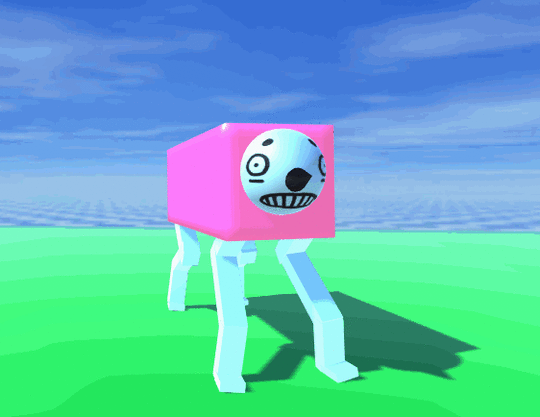
Now, let me tell you about the birds and the bees. Puppies that come from fertilized eggs will take on combined qualities of its two parents; an unfertilized egg will produce a puppy that’s a mutated version of the egg-laying parent. Eggs, as they “ripen,” will change color and pattern to hint at the dog that’ll hatch, according to Astle.
Eggs will end up being a pretty important part of Wobbledogs, and not only because that’s how players will make new dogs; players will be able to get an economy going by selling their eggs.
Astle detailed the process of developing the egg system and the puppies on his detailed devlog. The addition of puppies to Wobbledogs actually came from problems Astle was having with eggs hatching—the dogs coming out of the eggs were bigger than the eggs themselves, causing problems in regards to having enough space to hatch. Because when they do hatch, you’ll want space. It’s a big confetti explosions! Puppies deserve a celebration.
Wobbledogs is in active development and changing constantly. Keep up with it on the game’s devlog and its website.



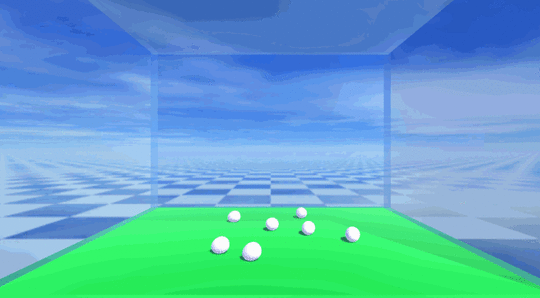
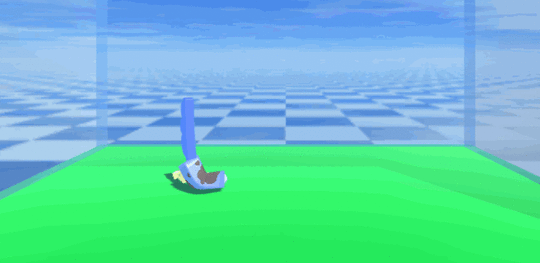
The post Wobbledogs has the wackiest videogame dogs yet appeared first on Kill Screen.
GoNNER wants you to cheer up a sad whale by dying over and over
GoNNER creator Mattias Dittrich—who goes by Ditto—describes his game as “tough as hell,” and he’s not wrong. It’s one of those games where I ask myself just why I keep clicking continue; death after death, I am thrown back to the beginning of the game. That is, unless I have enough currency to buy my way back to the level I died in—which I never do.
GoNNER is a 2D platformer by creator Art in Heart with serious roguelike elements, not unlike The Binding of Isaac (2011) or Downwell (2015). It’s almost as punishing, too. But that’s not to say GoNNER is unfair or impossible. It’s not, which is why I do keep coming back to it, just to get punished over and over. Simple mechanics—shoot, jump, equip one extra ability—paired with steady level progression provide you with exactly what is needed to get through each level. The only thing stopping you is your (and my) inability to not die. Harsh, I know.
It feels good getting through levels
It feels really good getting through levels, even the easy ones; paying attention, learning what works and what doesn’t, is essential. GoNNER, technically, pushes that along—though it’s only through playing and replaying that players will start to get it. And then, once you’ve gotten the hang of that, GoNNER starts unlocking different pieces of equipment—motivation to keep going—to fit new, unique challenges. Still, these are simple—you can change heads, weapons, and backpacks. These three working parts create combinations suited to different play styles—of which will be discovered only by playing more and more.
GoNNER is plain cute, too—and that definitely doesn’t hurt its replayability. I want to see the other dark and weird worlds Ditto has filled with increasingly adorable enemies. (So far, I’ve seen two worlds, and each is more cute than the last.) That’s not even to mention the pal you’re putting yourself through this whole thing for, either: Sally the whale. You’re traipsing through GoNNER’s deadly (and cute) mazes to find little trinkets to cheer her up with. Aww.
Cheer up Sally yourself by buying GoNNER for 10 bucks on Steam . GoNNER was released October 12 for PC and Mac.



The post GoNNER wants you to cheer up a sad whale by dying over and over appeared first on Kill Screen.
Welfare State, a game about the anxieties of flirting with poverty
In high school, I played a game called Spent. This poverty simulator was a welcome distraction from an otherwise unbearable personal finance class. Spent begins by chiding you with the question: “You’d never need help, right?”
From there, it’s a juggling act of rent, groceries, activities for your kids, and random setbacks in the form of injuries and car repairs. In Spent, once you get the hang of it, you can keep your head above water for quite some time. In Randy O’Connor’s new iOS game Welfare State, however, you’ve already drowned.
Welfare State is, in O’Connor’s own words,”a stressful clicker laid over a contemplative poetry generator.” A lotus flower, representative of your life force, inhales and sighs in the background as you make mundane decisions about your spending—buying coffee, sending a gift, or throwing a few dollars in the donation basket at church. There are no tremendous gains or losses to be had here. Transactions never amount to more than five dollars. But those small margins illustrate just how thin the line between getting by and getting welfare can be.
you’ve already drowned
This game doesn’t want you to explore your fate. It’s clear from the start that you’ll go broke. The only question is, when? The finality and haste of it all gives the poetry, randomly generated from 250 phrases, depth it would otherwise lack. The poems can be rash or hauntingly beautiful:
“I always hesitate as I walk by.”
“You came so fucking close.”
“There are so many here.”
The best part is, you’re the one that gives them meaning.
Welfare State resonated with me because it’s got soul. Its bohemian nature may understandably come off as pretentious to some. But, to a 20 year old desperately lacking in serotonin and cash, this millennialized, Bright Eyes-esque aestheticization of poverty isn’t all that far-fetched.
You can play Welfare State for free(!) on iOS.
The post Welfare State, a game about the anxieties of flirting with poverty appeared first on Kill Screen.
Give Lost Ember all your money so you can play as a good boy
A gentle breeze rustles the tall grass that surrounds you, causing the blades to sway back and forth lazily to the soft rhythm of the wind. Up ahead lies a dirt path, leading to an unknown destination whose name was lost to time long ago. You’re curled up on a patch of soil near a bank of water, taking a short break from exploring the environment.
The ripples created by the wind roll slowly toward you, splashing at your paws. You catch a glimpse of your resting form in the reflection—distorted, but beautiful. Your coat is thick and long, and your ears are sharp and attentive. Your legs are agile and strong, able to carry the weight of the discoveries during your travels. You rouse yourself from the ground and stretch, extending your neck upward to release a howl. A flash of red light drifts toward you, circling around you excitedly. You wag your tail and the two of you set off.
///
Lost Ember is an exploration game that’ll task you with finding out what happened to the old Inrashi culture that dwelled in the lands you inhabit before you. You’ll do this with the help of your disembodied companion, who is all that remains of the past. The old soul guides you in the adventuring, able to show memories of its past that allows you to experience its forgotten journey.
Who’s a good boy? In Lost Ember, YOU are
Being created by Mooneye Studios, a team of five designers based in Germany, Lost Ember now has a Kickstarter campaign. The hope is to crowd fund enough money to ensure that the studio’s vision can come to fruition. If funded, stretch goals include additional animations, additional languages, and more animals to “possess.” According to the page, 55 percent of the money will be used to finish development, while the rest go to taxes, Kickstarter fees, and most importantly, backer rewards. Depending on what tier you pledge, you have the opportunity to receive a physical art book, vinyl soundtrack … or a handmade statue of the good boy himself, cast in resin.
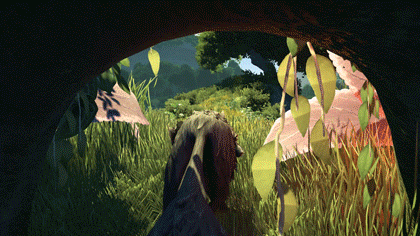
Who’s a good boy? In Lost Ember YOU are. You play as a bigger boy wolf, and explore the surrounding environment as the magnificent four-legged creature for the majority of the game. But you’re also able to switch perspectives and posses other animals in order to gain greater mobility (like when you’re a bird) or reach places you were otherwise unable to (like a digging underground as a mole). According to the game’s creator, other creatures include “parrots, fish, moles, eagles, capybaras, mountain goats, buffalos …” but no other good boys. That’s OK, because there can only be one alpha. And it’s you.
Being able to play as a dog wolf with a companion sounds incredibly appealing—at least to me, lover of all good boys—especially as “the wolf and his companion form a deep relationship of friendship and trust.” Even in a setting where civilization has crumbled, it’s comforting to know that the bond between canine and disembodied floating red light/spirit goes untarnished.
The plan is to have Lost Ember released on Xbox One, PC, and PS4. Click here to take a look at the Kickstarter page for more information. Do it for the dog.
The post Give Lost Ember all your money so you can play as a good boy appeared first on Kill Screen.
Kill Screen Magazine's Blog
- Kill Screen Magazine's profile
- 4 followers


